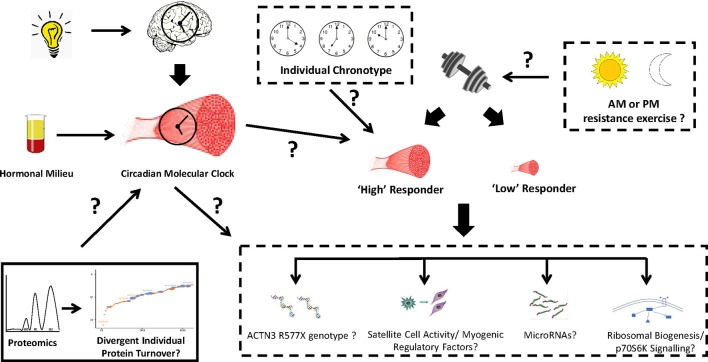Figure 3.
Hypothetical link between the skeletal muscle molecular clock and resistance exercise adaptation responses. Several molecular mechanisms have been implicated in the molecular basis associated with anabolic heterogeneity following resistance exercise. Scheduled exercise can entrain the circadian clocks in skeletal muscle, however it is unknown whether the time of day performance of resistance exercise (morning, afternoon, or evening), an individual's sleep/activity chronotype, and the associated effects on the molecular clock, can influence anabolic adaptations with resistance training. An area of further investigation within this paradigm is the use of proteomic platforms to interrogate whether the turnover rates of myofibrillar and sarcoplasmic proteins are differentially altered when resistance exercise is performed in the morning or evening. This information would provide valuable insight to the molecular mechanisms that govern anabolic adaptations with resistance training and help decipher whether particular individuals may experience greater benefits with resistance training when performed at different times of the day.

